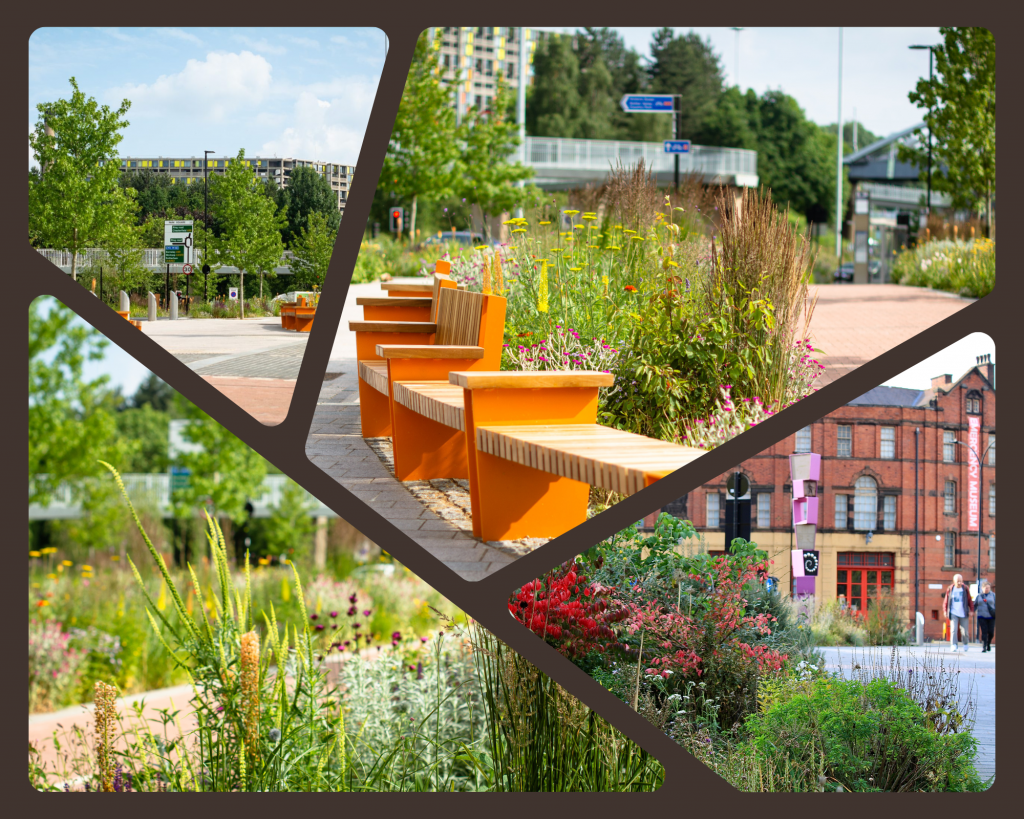The Grey to Green scheme in Sheffield is an innovative urban regeneration project aimed at transforming formerly neglected and underused areas of the city into green and sustainable spaces. The project’s main focus is on sustainable urban drainage, or SuDS (Sustainable Drainage Systems), to manage rainwater and reduce flooding, while also enhancing the urban environment.
Key features and aspects of Sheffield’s Grey to Green scheme include:
- Green Infrastructure: The scheme incorporates extensive greenery, including trees, shrubs, and grassy areas, to increase the city’s green space and provide a more attractive urban environment.
- SuDS: The project uses SuDS techniques to manage rainwater. These include permeable pavements, swales, and green roofs that allow rainwater to be absorbed into the ground naturally, reducing the risk of flooding.
- Urban Revitalization: Grey to Green focuses on regenerating post-industrial areas, repurposing abandoned spaces, and creating attractive public spaces that promote community well-being.
- Biodiversity: By increasing greenery and creating wetland areas, the scheme encourages biodiversity and wildlife habitat within the urban environment.
- Pedestrian and Cyclist-Friendly: The project also prioritizes pedestrians and cyclists by improving walking and cycling routes and creating more accessible and safer urban spaces.
- Economic Benefits: In addition to environmental benefits, the scheme aims to boost local economies by attracting businesses, tourism, and investment to the revitalized areas.
- Sustainability: Grey to Green aligns with sustainability goals, addressing issues like climate change, urban heat islands, and air quality by incorporating green infrastructure.

Sheffield’s Grey to Green scheme is a noteworthy example of how cities can transform underutilized urban areas into vibrant, sustainable, and attractive spaces that benefit both residents and the environment. It showcases the potential of green infrastructure and SuDS in urban planning and revitalization.